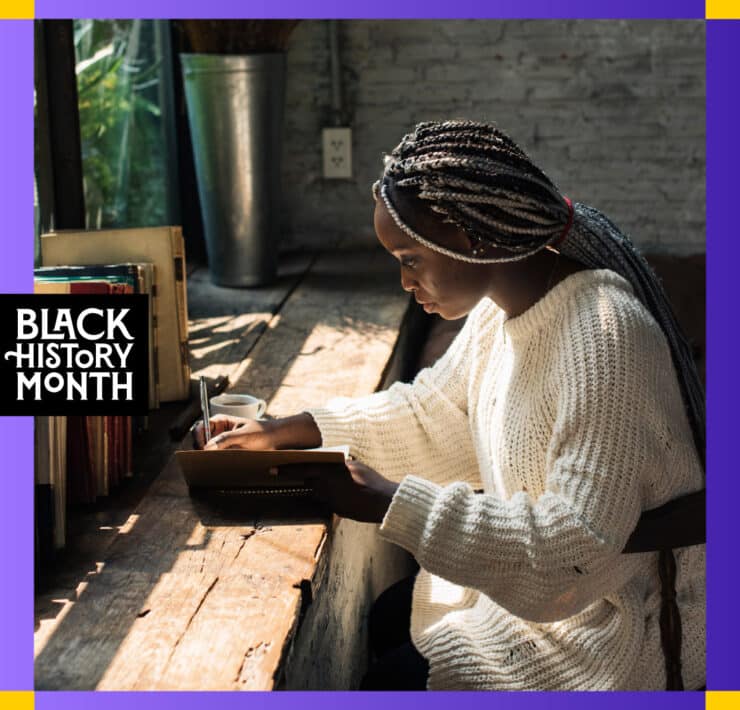
|
Getting your Trinity Audio player ready...
|
There are many reasons to write a book—professional visibility, the desire to help others, maybe even the ambition to transform the way we do business. But there are just as many reasons why books don’t get written. An author might start out just to find that they don’t have the time, energy, or resources they need to finish. Or they might be blindsided by the complexities and ambiguity of the publishing process. Perhaps they never found the courage they needed to really begin.
We need more Latinos to begin. And we need even more to finish.“Folks reach out to me all the time mentioning that they have a book in mind, or that they have a manuscript, and that they have this passion for getting their story out there,” says Frank Carbajal, coauthor of Latinx Business Success: How Latinx Ingenuity, Innovation, and Tenacity are Driving Some of the World’s Biggest Companies. “But out of every fifty individuals, maybe two or three follow through. And if only two out of fifty follow through, then we’re not really sharing our stories.”
“And if we don’t tell our stories, who will?” adds Carbajal’s coauthor, Dr. José Morey. “We need to be out there telling our stories so that our kids and future generations will have leaders to look up to.”
So, tell your story. Write the book you’ve been dreaming about. And if you’re not sure where to begin, these seven steps should give you a good place to start.
Step 1: Figure Out Your “Why”
Why do you want to write a book? It’s a simple question, but it’s still difficult for many professionals to answer. Maybe you just don’t know your “why” quite yet. Or maybe your “why” is more akin to a feeling of pressure.
“I think writing a book is becoming a bit of a trend,” says Ilhiana Rojas Saldana, author of Your Path to Extraordinary: Meaningful Transformation Starts Here. “It’s like FOMO—people have a fear of missing out and think, ‘I need to write a book too.’
“It needs to be the right reason for you,” she continues. “It’s very important to have clarity on what’s driving the writing of your book and the impact that you want to create by writing it. If your purpose isn’t clear, you’re going to put your book out there and it’s not going to accomplish what you wanted.”
Step 2: Define Your Idea
Unfortunately, it’s not enough to have a general idea of the topic you want to write about—as Paola Ramos, author of Finding Latinx: In Search of the Voices Redefining Latino Identity explains, you must also have an “interesting angle” on that topic.
“I’ve always kept in mind what my dad taught me, which is that there’s always something that only you can say,” Ramos says. “Everyone’s covering immigration, everyone’s covering the Latino community, everyone’s covering politics. But within that story, what is a specific angle that only you can talk about because you’ve lived it, or because you see something that other people don’t see?”
Step 3: Do Your Research
Publishing a book takes a lot of time, energy, and work, but you can save yourself a substantial amount of time (and a lot of stressful nights) by investing in the research stage.
Study different writing styles by reading books in the genre in which you want to publish. Sign up for seminars on the book-writing process. Reach out to people you know who have gone through the publishing process already. Explore the differences between self-publishing and attempting to publish through a traditional publishing house like Simon & Schuster or Penguin Random House, and then start thinking about which path might work better for you. And don’t start writing until you’re sure you have a clear understanding of what’s ahead.
“Find your networks, ask questions, put together a set of questions, and get very clear on what you know and what you don’t know,” advises Daisy Auger-Dominguez, author of the forthcoming book Inclusion Revolution: The Essential Guide to Dismantling Racial Inequity in the Workplace. “Collect data and then do an audit of what your strengths are, what your weaknesses are, and what your resources are. Writing a book is not an easy or light process, so you really have to do an audit of what you have and what you still need before you embark upon it.”
Step 4: Get the Right People Around You
As with any other endeavor, in business or otherwise, writing a book is a team effort. You might find it helpful to find a coauthor who is as passionate about your topic as you are, Carbajal did with Morey. And you’ll certainly need people around you who can help you get out of your own head, people who can support and encourage you, and people who are willing and able to advocate for what you deserve.
“The publishing industry is massive, it’s bureaucratic, and it continues to be predominantly white,” Ramos points out. “I’ve felt what I think a lot of younger Latinos feel, which is this imposter syndrome—our gut inclination is always to say yes to everything. We always deserve someone—like a book agent—to advocate for us, to tell us that we can go beyond being pigeonholed, and to teach us how to navigate the process.”
Step 5: Write, Write, and Write Some More
You don’t have to dive into writing your book right away—in fact, if you haven’t done much writing before, you can and should start small. You could publish LinkedIn articles, write for your company’s blog, start a personal blog of your own, or even just begin writing in a journal.
Then, when you’re ready, sit down and start. Then keep going. And going. And going. Writing a book takes discipline, especially since many professionals only have time to work on the project late at night, early in the morning, and on weekends. But keep carving out the time, and you’ll see the returns.
As you write, think about your intended audience. Rojas Saldana’s editor asked her many questions to help her clarify how she wanted to connect with readers: “Who’s your audience, and what are they looking for? What does success look like for the person reading this book—what do you want them to take away from the experience? If you’re sharing a process, what’s the outcome? Do you want readers to be inspired, or empowered?”
Last, but not least, be true to yourself and your experiences. That might mean adding in words and phrases in Spanish that are important to who you are. Or, depending on the tone and topic of your book, you could share parts of your personal journey with your readers. “There’s little nods to my culture and heritage throughout Inclusion Revolution,” Auger-Dominguez says. “It has my stories as a Latinx woman when I started my career—and my experiences as a Latinx executive sitting in the C-suite and still having to measure my voice.”
Step 6: Prepare Yourself for Change
Your book is practically guaranteed to change and evolve during the writing and editing process. Your editor might ask you to reorder some of your chapters or recommend that you add in new elements. Your beta readers might tell you that certain portions of the book don’t make sense. Or you yourself might realize that the story you set out to tell isn’t the one that really needs to be told.
“I think we sometimes go into the process with this eagerness to write, thinking that we just have to put words onto paper,” Ramos remarks. “But when I’ve really listened to my interviews, the story has tended to shift. And those shifts have actually led me to better stories because I’ve allowed the thesis to expand and I’ve given myself the flexibility to pivot.”
Step 7: Spread the Word
Even once the book is finished, your part as an author is not. If you’ve opted to self-publish your book, you’ll need to do some heavy lifting to promote your work. But even if you’ve published through a publishing house, big or small, you might not be off the hook.
“Not every publisher has a marketing and sales team,” Auger-Dominguez explains. “Apparently I had one of the bigger, more developed ones, which has been great, but a lot of it still falls on me. I spent money refreshing my website and creating a series of posts that I’ll be using to get folks excited about the book. I took a week off to send individual letters to everyone that I know letting them know that my book is coming out, and I created a wish list of podcasts that I like and people that I would love to be in conversation with.
“I also ended up hiring a book launch project manager,” Auger-Dominguez continues. “I wanted someone who could help me with social media, someone who could walk me through the process of doing a book tour, and someone who could connect the dots with my event planning.”
Daisy Auger-Dominguez is the author of Inclusion Revolution: The Essential Guide to Dismantling Racial Inequity in the Workplace. Her work has been reviewed by prominent leaders and outlets like Alicia Menendez, Publisher’s Weekly, Anita Hill, and Harvard Business Review. Inclusion Revolution was also recently spotlighted by Adam Grant as one of his favorite new spring books.
Frank Carbajal and Dr. José Morey are coauthors of Latinx Business Success: How Latinx Ingenuity, Innovation, and Tenacity are Driving Some of the World’s Biggest Companies, which became a best-seller in Amazon’s economics, business, and entrepreneurship categories soon after its release in November 2021.
Paola Ramos’s 2020 book Finding Latinx: In Search of the Voices Redefining Latino Identity has received praise from prestigious publications such as Marie Claire, Fortune, and Kirkus Reviews, as well as influential leaders like Stacey Abrams.
Ilhiana Rojas Saldana is the author of Your Path to Extraordinary: Meaningful Transformation Starts Here and also worked on the 2021 book Extraordinary Latinas: Powerful Voices of Resilience, Courage & Empowerment alongside other leaders like Enna Jimenez and Maritza Coscarelli.







